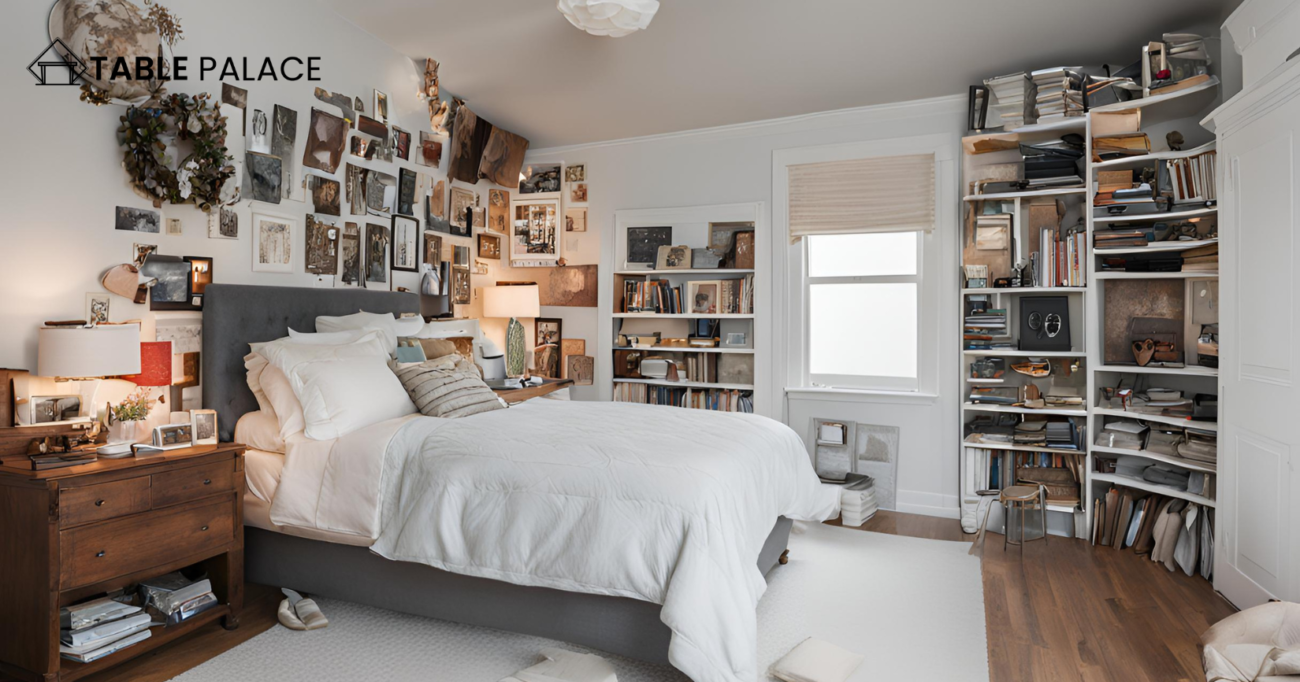Your bedroom should be your sanctuary. Whether you prefer inviting neutrals or bold patterns, make sure it’s comfortable and free from clutter, whether work-related or otherwise. Keep your phone and computer out of bed, and don’t let laundry pile up on your nightstand. Your bedroom is for sleeping, so leave the yoga mat, guitar, thought-provoking art, pet supplies, and distracting tech in other rooms.
These might seem like basic tips, but seven interior designers have shared their top advice for creating a bedroom you’ll love and where you can enjoy restful sleep.
Clothing Clutter and Gym Equipment

Designer Jean Parker advises against piling surfaces or accent chairs with clothes. “A bedroom should be serene, tranquil, and a place where you can truly recharge and reset,” she says. “Your bedroom is not a gym, so avoid storing any exercise equipment there.”
Office Equipment

Some items just don’t belong in the bedroom, like printers, shredders, or other office equipment. Designer Amity Worrel also suggests avoiding desks unless they are simple writing desks that don’t remind you of work, as well as keyboards or other musical instruments, and bright lighting.
“When creating a space meant to be relaxing and an escape from work and daily tasks, it’s important to carefully consider what to keep and what to remove,” she says.
Utilitarian Blinds

We’ve all had those standard blinds at some point, but it’s time to let them go.
“Those dreary, utilitarian floor-to-ceiling slat blinds we’ve all encountered in rental apartments have no place in the bedroom,” say Lily Spindle co-founders and principal designers Rebecca Cox and Debra Vigna. “Toss them and opt for custom drapery instead.”
Cox and Vigna recommend patterned, custom drapery to add warmth and a personal touch to your bedroom.
Visual Clutter

Bedrooms should be calming and relaxing, so designer Emma Montgomery recommends minimizing visual clutter. Instead of filling the walls with numerous prints, she focuses on the walls themselves.
“I designed this bedroom to feel cocoon-like and peaceful with beautiful terracotta-colored plaster walls. The walls have a soothing texture and eliminate the need for art,” she explains.
Simple furnishings, a small piece of art, and monotone bedding complete the restful look.
Too Much Shelving

California designer Abbie Naber advises against excessive open shelving in bedrooms, as it can lead to clutter.
“If you have open shelving, keep items to a minimum and make them decorative,” she suggests. In this Japandi-style bedroom, open shelving is used for display only, not everyday items. Pick a few pieces that make you smile, like decorative vessels, to create a serene atmosphere.
Phones and TVs
Atlanta-based interior designer Laura W. Jenkins recommends keeping bedrooms tech-free, mess-free, and calming.
“With all the distractions in the world today, your bedroom should be a decompression zone and therefore a tech-free zone,” she advises. “While you may need to keep your phone bedside, if possible, remove your television, put your charger in another room, and clean up the tech mess. Allow your brain to unwind by adding books, family photos, and items that bring you comfort rather than stress.”
Jenkins also suggests using quiet colors. “The purpose of your bedroom should be to promote good sleep and allow you to unwind. Softer, less bright colors are more calming for a bedroom. For this room, we painted the walls a perfect deep blush, which is incredibly soothing,” she says.
Computers

Silo Studios’ Gabriela Eisenhart believes the bedroom should feel like a getaway.
“We believe in designing clean retreats when it comes to bedrooms,” she says. “It’s important when you walk into your room that you feel you can leave the stresses of the day at the door. Our hard nos for a bedroom include computers, clutter, and your Peloton!”
Key Takeaways
Ensure your bedroom remains clutter-free for a tranquil atmosphere conducive to relaxation and sleep. Avoid storing electronics, work-related items, or too much shelving, opting instead for minimalist decor and soothing colors to enhance the ambiance. By eliminating distractions and prioritizing comfort, you can create an ideal environment for rest and rejuvenation.

